
NAMMbulating 2014
NAMM Convention January 2014, Anaheim, CA
Page 1 of 3 - Go to the next page
![]()
We'll start with the disclaimers to save time, save face, whatever. ~~~ I also had a new smartphone that I had just gotten a couple of months before. However, Hall E is pretty spotty for reception, so texting with others didn't work out very well at first. So I'm going to let Bohemian guitars describe what they do: "The Bohemian Vintage Series of stringed instruments are one-of-a-kind masterpieces. Each one is made with vintage oil cans and lunch boxes as the body, while the neck, hardware, and other assorted parts are saved from used instruments. It's simply upcycling at its finest, a truly innovative and sustainable way to make music." http://www.bohemianguitars.com/ You're probably wondering...what does it sound like? Well, like a rich, full-bodied guitar. |
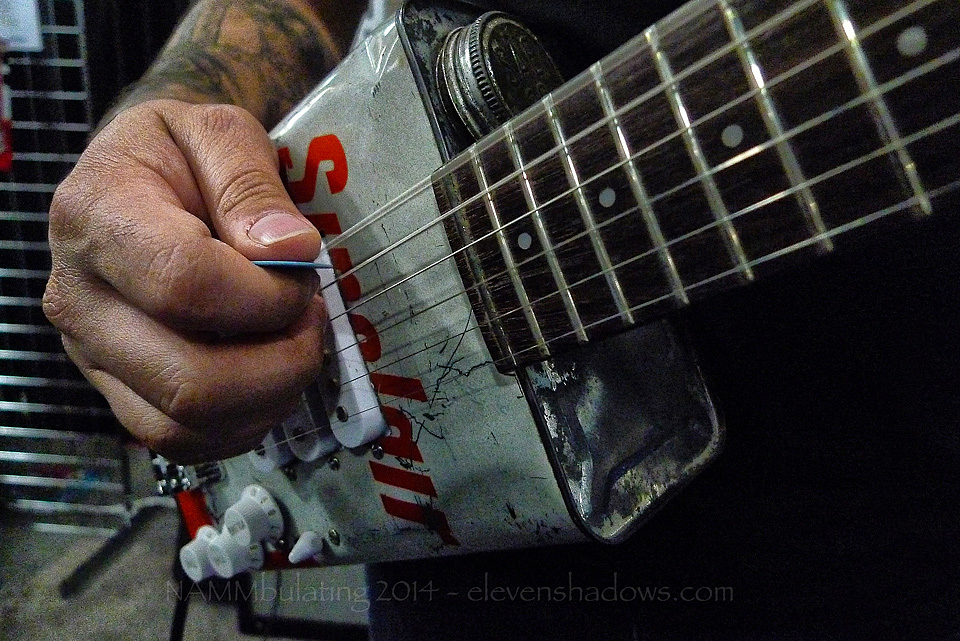 Another oil can guitar from Bohemian Guitars, many of them from vintage cans that have been recycled.
Another oil can guitar from Bohemian Guitars, many of them from vintage cans that have been recycled. |
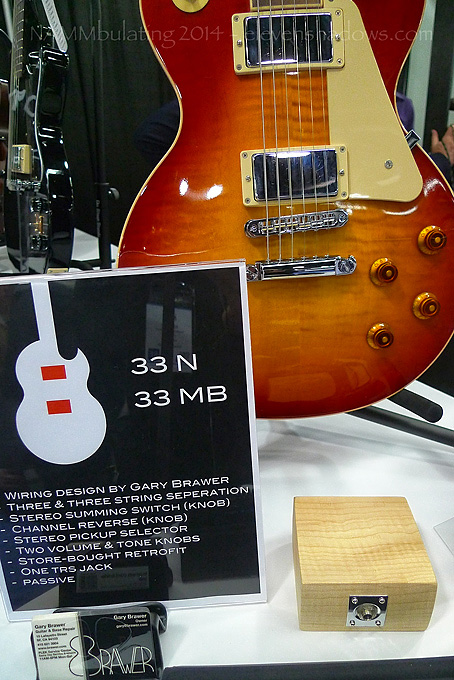 This is a stereo pickup from Gary Brawer, also in Hall E. The wooden breakout box at the bottom puts out stereo outputs, and one can effect each signal differently. Currently, the company makes 4-2 (4 strings on one side, 2 on the other) and 3-3 (you can figure it out! :D ). See the sign for the rest.
This is a stereo pickup from Gary Brawer, also in Hall E. The wooden breakout box at the bottom puts out stereo outputs, and one can effect each signal differently. Currently, the company makes 4-2 (4 strings on one side, 2 on the other) and 3-3 (you can figure it out! :D ). See the sign for the rest. |
I continued wandering Hall E. My friend Chris had mentioned that I should stop by a certain booth that was run by friends he knew at The Brewery in L.A. I stopped to check out this interesting controller from Touchmark Guitars, then walked on, only to realize that this was the booth I was intending to stop by! As much for accuracy as laziness, I'll let them describe what it is and why they use a touch interface: "Instead of the limited 3 or 5-position switches, the touch panel gives a gradient of 256 increments. This allows the musician to seamlessly blend tones. To control volume and capacitor tone, a touch panel replaces the potentiometer knob, creating the same gradient as the original component, but with an ergonomic advantage. The touch panels are controlled by tapping motions (for quick changes) or sliding motions (for smooth and gradual changes). Why a Touch Interface? Consider the way you play guitar – the multiple complex motions you use to bring life to an instrument. Now consider the traditional electric guitar interface." The ergonomic configuration of the guitar determines the motion paths of the hands and fingers when strumming and picking. These paths developed in harmony with the instrument. Electric guitars gave a new way to make use of those motion paths, but with the added clutter of controls – transducer pickup output is controlled by turning knobs and flipping switches into various positions. The traditional interface results in conflicting motion paths to the traditional form of the guitar. The Touchmark Guitar interface intuitively aligns these motion paths to the player’s advantage. Activated by the touch of a finger, fingernail, or guitar pick stylus in a tapping or sliding motion, Touchmark Guitar touch panels are flat and very thin. Strategically positioned within the playing field, they optimize playing and control.
|
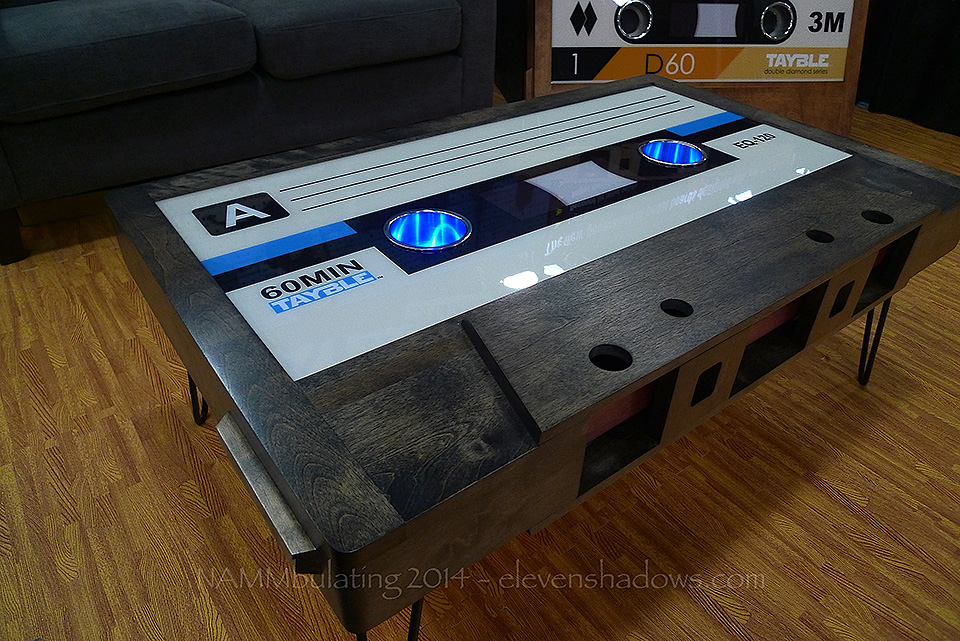 A wooden cassette table. A wooden cassette table. |
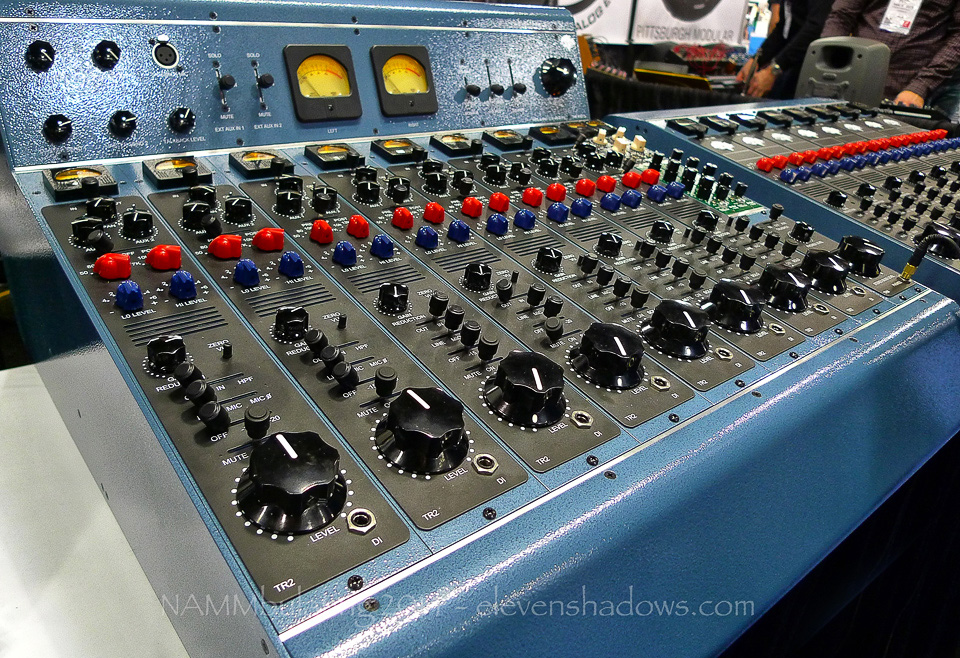 Gorgeous sounding tube hybrid console by Tree Audio, this really caught my eye. This is the 8-channel model (there's also a 16-channel) at a cool $22,500. Grab one of those enormous dials, and you expect things to happen (maybe your lights dim, I don't know). And apparently it's as beautiful as it looks. Herbie Hancock's "The Joni Letters" was recorded using Tree Audio consoles, and that recording is exquisite. Gorgeous sounding tube hybrid console by Tree Audio, this really caught my eye. This is the 8-channel model (there's also a 16-channel) at a cool $22,500. Grab one of those enormous dials, and you expect things to happen (maybe your lights dim, I don't know). And apparently it's as beautiful as it looks. Herbie Hancock's "The Joni Letters" was recorded using Tree Audio consoles, and that recording is exquisite.The Roots, Tree Audio's latest Full Featured 8 Channels/2 Buss Tube Hybrid Console Featuring: All tube EQ and limiter on each channel 4 slots for 500 Series modules Vacuum tube regulated supply for all tube input modules INPUT MODULE FEATURES (FROM TOP TO BOTTOM) Meter Meter select (input, gain reduction, output) Pan Stereo buss switch (removes signal from stereo buss for direct out) Aux send 1 Aux send 2 Pre, off, post switch Lo Freq EQ - 50 Hz, 80 Hz, 100 Hz ,400 Hz Hi Freq EQ - 7K, 10K, 12K, 16K Gain reduction pot (limiter) Limiter switch (out, in , HPF) 250 HZ 12DB per octave Line, mic, mic reverse phase Pad switch (off, -10, -20) Mute, on , solo Big knob level pot METER BRIDGE Buss Master 1 & 2 Aux master 1 & 2 Talkback mic XLR Talkback level External Aux in 1 (mute, on, solo) External Aux in 2 (mute, on, solo) Monitor Source Select Speaker Select Big knob monitor level REAR PANEL Mic in, line in, direct out Phantom power switch (all modules and talkback mic) Master section ins and outs Control room monitor outputs If used as a direct out with no bussing, all pure transformers and tubes When use thru the bussing, Inward Connections SP690 all discrete blocks |
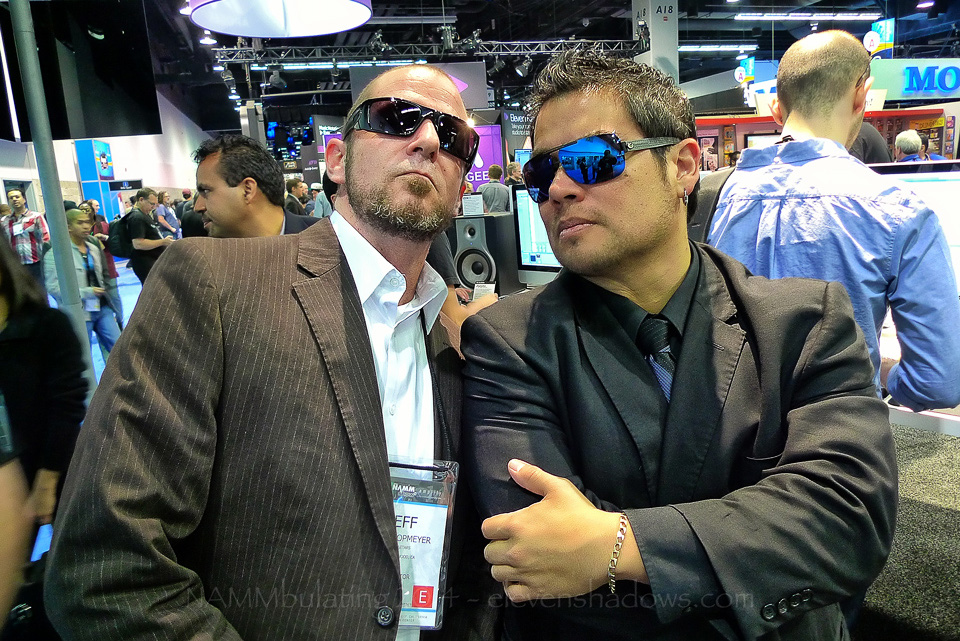 I ran into Jeff and Gus. This is one of my favorite parts of NAMM, running into friends that I often don't see. I've known these guys for years, but unfortunately, don't see them very often. I ran into Jeff and Gus. This is one of my favorite parts of NAMM, running into friends that I often don't see. I've known these guys for years, but unfortunately, don't see them very often. |
 Jeff and Gus. Jeff and Gus. |
 Gus, me, and Jeff near the M-Audio booth, displaying some fascinating products. Gus, me, and Jeff near the M-Audio booth, displaying some fascinating products. |
 The 10 Commandments of Understanding Music Streaming Revenue according to Moses Avalon, where I sat in on a seminar with Chris. The 10 Commandments of Understanding Music Streaming Revenue according to Moses Avalon, where I sat in on a seminar with Chris. |
 I really liked the Alphasphere, a very expressive musical instrument. The shape of the globe felt very natural and conducive to playing the 48 pads, and the pads' touch sensitivity were *perfect* and immediately playable, whether you tapped it percussively, held the note, pushed down harder, or whatever. It tethers to a computer for a wide bank of expressive sounds, and allows you to customize it, putting in additional samples if you wish. The only curious thing was that it was completely open, and you could see all the wires inside. I couldn't help but wonder whether the Alphasphere would quickly collect dust. It's about US$899, so it's not cheap, but it's darn good. And yes, it has MIDI capability. I really liked the Alphasphere, a very expressive musical instrument. The shape of the globe felt very natural and conducive to playing the 48 pads, and the pads' touch sensitivity were *perfect* and immediately playable, whether you tapped it percussively, held the note, pushed down harder, or whatever. It tethers to a computer for a wide bank of expressive sounds, and allows you to customize it, putting in additional samples if you wish. The only curious thing was that it was completely open, and you could see all the wires inside. I couldn't help but wonder whether the Alphasphere would quickly collect dust. It's about US$899, so it's not cheap, but it's darn good. And yes, it has MIDI capability. |
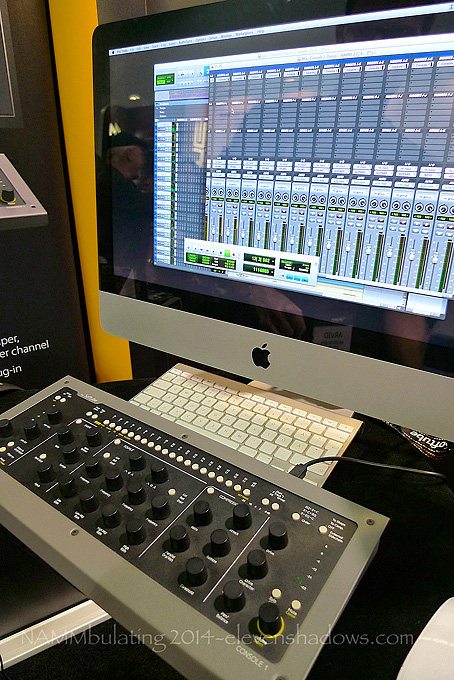 Softube Console 1 is, according to them, "the next generation audio mixer. Used together with any major DAW, Console 1 will not only give you the analog sound that Softube's plug-ins are world famous for, but also the analog workflow of using physical knobs and buttons when you mix. Console 1 is all about great sound and intuitive, hands-on control."Softube can allegedly recreate the sound of a classic '70s British console ready to go on every project, and modeled l the sound of vintage analog EQs, compressors, and even saturation characteristics. The physical control did seem really user-friendly. The price is $999. Softube Console 1 is, according to them, "the next generation audio mixer. Used together with any major DAW, Console 1 will not only give you the analog sound that Softube's plug-ins are world famous for, but also the analog workflow of using physical knobs and buttons when you mix. Console 1 is all about great sound and intuitive, hands-on control."Softube can allegedly recreate the sound of a classic '70s British console ready to go on every project, and modeled l the sound of vintage analog EQs, compressors, and even saturation characteristics. The physical control did seem really user-friendly. The price is $999. |
But today, I went to Avalon to check it out briefly. Why? It's sort of a long story, but basically, my friend called up, asking if I wanted to purchase his Avalon 737, which he had at a pawn shop. He had fallen on hard financial times, the victim of a severe recession as much as anything else, and had brought his Avalon to a pawn shop three years ago, paying interest the whole time. So he asked, "Would you buy this?" Not really knowing the Avalon or its price, I hesitated initially, thinking that I already had enough high quality mic preamps and gear. But he said it was really important that if someone were to get this, it'd go to a friend who would use it. So I relented, figuring I'd help him out emotionally if nothing else, agreeing to purchase it for approximately $400. I then Googled it. Holy crud. It was worth a lot of money, and, sifting past the mind-numbing comments, realized that it was a very high end piece of gear. Turns out my friend seemed to be doing me a favor, not so much the other way around. So probably at the end of this month, I'll get it and fire it up. Should be a lot of fun. I've heard the EQ is pretty great. |
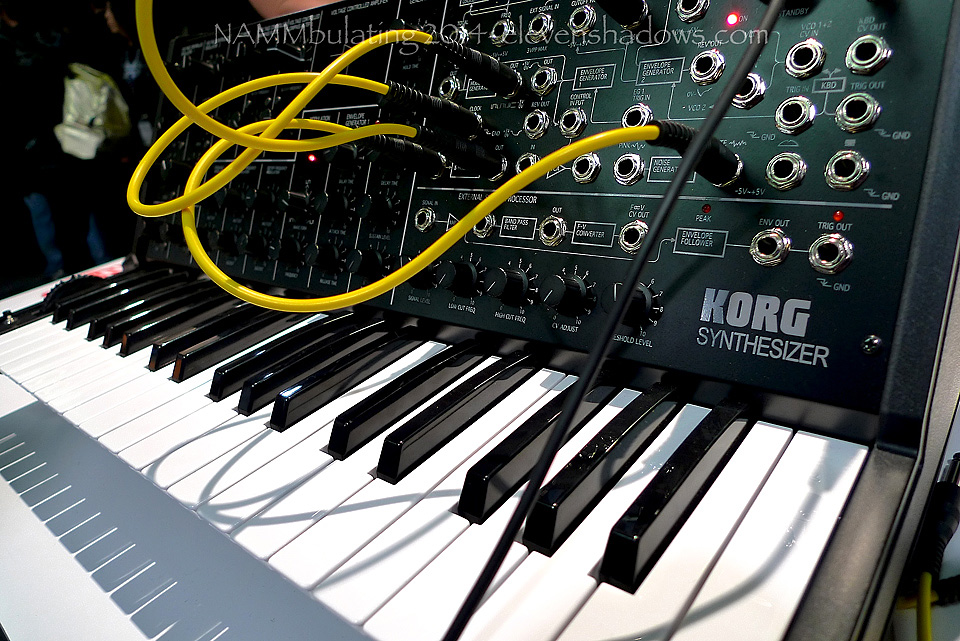 I love MS-20s. I bought one in the mid-'90s, and it gets used more than any other keyboard in my studio by far. It's rich and fat and complex, and I just absolutely love it. This is a new MS-20 kit that Korg is putting out. It's about US$1400, and doesn't require soldering or wiring. It also has MIDI, but is electronically the same as the original MS-20 I have.
I love MS-20s. I bought one in the mid-'90s, and it gets used more than any other keyboard in my studio by far. It's rich and fat and complex, and I just absolutely love it. This is a new MS-20 kit that Korg is putting out. It's about US$1400, and doesn't require soldering or wiring. It also has MIDI, but is electronically the same as the original MS-20 I have. |
|
|
Ken's photos of Nobel Peace Prize Winner Aung
San Suu Kyi, as well as photos of Peru, Burma, India, Morocco, China, Thailand,
Ghana, Ecuador, and elsewhere, have appeared in many books, magazines,
websites, and galleries. Visit the
Ken Lee Photography Website. Some of Ken's select photos may be
purchased through his
Imagekind Store. Join the fun and participation on Ken's Facebook Page. |
NAMMbulating, January 2014
Page 1 of 3
Eleven Shadows Travel Page
Contact photographer/musician Ken Lee